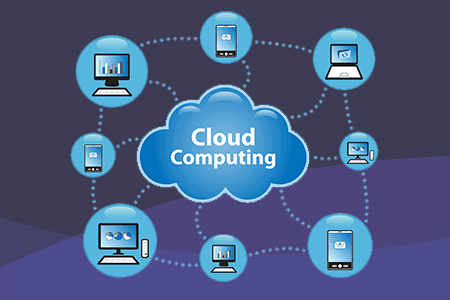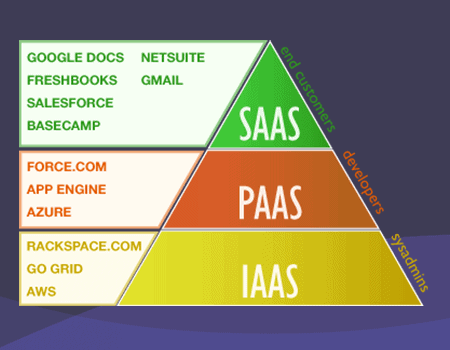Cloud computing is the reason you barely see external hard drives any more. It’s why solid state drives have been accepted even though their storage capacity is so tiny. It’s why you don’t see CD drives on most desktop computers any more. Most people don’t even carry USB sticks these days. Tablets and smart phones don’t have inputs for these, and they’re even disappearing from laptops.
But storage is just one way cloud computing has influenced our industries. We’ll talk about some others as we discuss…
[displayAd]
What is Cloud Computing?
To understand what this new technology is, let’s quickly look at how it came to be. Information technology (IT) workers started coming up with all kinds of clever ways to get more mileage out of computers to get past certain shortcomings.
Using a method called cluster computing, many computers could be connected via a local area network (LAN) to become one, more powerful supercomputer. This same technique was then developed into grid computing, where several clusters could be connected at various locations.
The concepts above were eventually combined with distributed computing, where various devices on the network could perform different tasks and communicate with one another. Add the advent of utility computing, where the pricing was based on usage rather than sold as time blocks or packages and you’re very close to where we are today.

Today, we in the IT crowd will set up distributed networks locally that connect to a grid of cluster servers at a secure hosting facility, perhaps across the country, and pay for our uses of that system like we would pay any utility company (like a power or water bill). It’s here that we store and access our databases, deploy applications, scale computing needs on demand, etc.
This has not only vastly reduced the complexity and start-up time for nearly everything related to the internet and networking, but has greatly reduced our expenditures as well.
History of Cloud Computing
Believe it or not, this all started in the 1950’s with the idea of “mainframes,” a lead computer in a cluster. By the 1960’s, personal computers (PC’s) were being used in homes and businesses, leading to the creation of the IT field. By the late 1980’s companies were moving away from mainframes to decentralized computing. When the dot-com boom occurred in the 2000’s, we moved into a client/server arrangement and ultimately virtualization. Now, this cloud architecture and cloud environments are found everywhere.
Types of Cloud Computing Services
The cloud industry has matured and evolved, settling on the following types of services:

- Infrastructure as a Service (IaaS) – This is basically the server hardware and software set-up, maintained, and rented out to IT departments who still want to configure their own storage, networking, etc. It removes the most foundational steps, saving much time.
- Platform as a Service (PaaS) – This goes one step further, where most of the software needed to deploy applications and databases is already taken care of, allowing the IT department to focus on the information and manipulation of that info.
- Software as a Service (SaaS) – This takes the concept to its final evolution. The software is coded, optimized, and deployed. The client end-user simply logs in and enters their data, reads the analytics, etc.
We covered the topic of the 3 main types of cloud computing services at length if you are interested.
[displayAd]
Types of Cloud Deployments
Despite the public’s basic understanding of it all (the fault of marketing), there isn’t one, pervasive cloud infrastructure. There are tons of individual ones, some meant to be isolated and some allowed to communicate with the web at large. Here are the 3 main types:
- Public Cloud – This is where you find websites and SaaS applications. Public users can log in, use it, you can apply privacy principles, but a company with extremely sensitive data would not host their databases here.
- Private Cloud – This is an isolated set-up, either locally on premises or with a 3rd party provider, where only approved users can access the data. The security applied here is far stricter. This is for big companies like banks.
- Hybrid Cloud – A company like the bank mentioned may use email, spreadsheets, and analytics on a public cloud for their employees, but separate sensitive data on a private portion of their cloud. This is a hybrid set-up.
We covered the topic of the 3 types of cloud deployment at length if you want to dig deeper.
Benefits of Cloud Computing
There are some pretty substantial benefits to using the cloud over traditional hosting and computing methods:
- Accessibility – No matter the device or where you’re at, if you have an internet connection you can connect to your cloud.
- Scalability – If your application or website is suddenly experiencing heavy traffic, you can scale the resources available immediately and often automatically.
- Speed – With distributed resources, you can reach a much higher bandwidth and perhaps receive the information from a cluster closer to your locale.
- Low Cost – Because you only pay for what you use, your expenses will undoubtedly be lower.
- Recovery – Various backup points are created and stored at several locations so you can always restore your work if a disaster occurs.
- Maintenance – You don’t have to deal with the underlying software patches, updates, or anything else.
There are many more benefits that we’ve covered in the main benefits of cloud computing article, if it tickles your fancy.
[displayAd]
Conclusion
It should be pretty clear that this isn’t just new technology. It’s an evolution of existing technology to a logical end, one that uses the tech to its greatest advantage. The question “what is cloud computing” can be explained and understood by walking through the development of networking, basically.
At the end of the day, it has once again become simple enough that people don’t need to understand it to use it. But to the curious, I hope I’ve answered it plainly enough.
